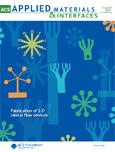
ACS Applied Materials & Interfaces
Scope & Guideline
Advancing the Frontiers of Applied Materials and Interfaces
Introduction
Aims and Scopes
- Materials Synthesis and Characterization:
The journal publishes research on innovative synthesis methods for new materials, including nanomaterials, polymers, and composites, along with detailed characterization techniques to understand their properties. - Energy Storage and Conversion:
A significant focus is on materials for energy applications, such as batteries (including lithium-ion and sodium-ion), supercapacitors, and photocatalysts, aiming to enhance efficiency, stability, and sustainability. - Biomaterials and Biomedical Applications:
Research on biomaterials aimed at medical applications, including drug delivery systems, wound healing, and tissue engineering, is a core area, highlighting the intersection of materials science with healthcare. - Nanoengineering and Nanotechnology:
The journal emphasizes the design and application of nanostructured materials, exploring their unique properties and potential applications in catalysis, sensing, and electronics. - Environmental Applications:
Studies addressing the use of materials for environmental remediation, including water purification and pollutant degradation, are also a key focus, reflecting the journal's commitment to sustainability.
Trending and Emerging
- Smart and Responsive Materials:
There is a growing emphasis on materials that respond to environmental changes (e.g., temperature, pH, light), with applications in sensors, actuators, and drug delivery systems. - Sustainable Materials and Green Chemistry:
Research exploring sustainable materials, including biodegradable polymers and eco-friendly synthesis methods, is trending as the scientific community increasingly prioritizes environmental responsibility. - Hybrid and Composite Materials:
The development of hybrid materials that combine organic and inorganic components for enhanced performance in energy storage, catalysis, and biomedicine is gaining traction. - Integration of Machine Learning and AI:
The use of machine learning and artificial intelligence to predict material properties and optimize synthesis processes is emerging as a significant theme, indicating a shift towards data-driven research. - Advanced Coatings and Surface Modifications:
Research on innovative coatings and modifications that enhance material properties, such as anti-corrosion, anti-fouling, and self-healing capabilities, is increasingly prevalent in recent publications.
Declining or Waning
- Traditional Organic Electronics:
The focus on conventional organic electronic materials, such as simple organic photovoltaics, has decreased as researchers shift towards hybrid and more complex systems that integrate nanomaterials and advanced interfaces. - Single-Material Systems:
Research concentrating solely on single-material systems without considering their integration into multifunctional devices has become less prominent, as the trend moves towards interdisciplinary approaches that combine various materials. - Basic Theoretical Studies:
There has been a noticeable decline in the publication of purely theoretical studies without experimental validation, as the journal increasingly favors applied research that demonstrates practical implications and real-world applications. - Static Interfaces:
The exploration of static material interfaces has diminished, with a shift towards dynamic and responsive materials that can adapt to environmental stimuli and operational conditions.
Similar Journals

BULLETIN OF MATERIALS SCIENCE
Advancing the Frontiers of Materials ScienceBulletin of Materials Science, published by the Indian Academy of Sciences, is a distinguished journal that has been contributing to the field of materials science since its inception in 1979. With an ISSN of 0250-4707 and E-ISSN 0973-7669, it provides a platform for researchers to share groundbreaking studies and advancements in the mechanics of materials and general materials science. As of 2023, the journal holds a respectable Q3 ranking in both the Materials Science (miscellaneous) and Mechanics of Materials categories, highlighting its competitive position in the academic landscape. Although the journal currently does not operate under an open access model, it remains a vital resource for professionals and students keen on exploring innovative material developments and methodologies. With a commitment to promoting high-quality research, the Bulletin of Materials Science features rigorous peer-review processes, making it an essential reference for anyone engaged in the materials science domain.

ADVANCED FUNCTIONAL MATERIALS
Unleashing the Potential of Cutting-edge Materials ResearchADVANCED FUNCTIONAL MATERIALS is a leading journal published by WILEY-V C H VERLAG GMBH, prominently recognized in the fields of biomaterials, chemistry, condensed matter physics, and materials science. With an impressive impact factor and a distinguished position in the Q1 quartile across multiple categories including nanoscience and nanotechnology, this journal serves as a vital platform for researchers and professionals committed to innovating in functional materials. Since its inception in 2000, ADVANCED FUNCTIONAL MATERIALS has published high-quality peer-reviewed articles that push the boundaries of materials science, exploring new frontiers in electronic, optical, and magnetic materials. The journal's dedication to open access ensures that its groundbreaking findings are readily available to a global audience, fostering collaboration and knowledge-sharing among scholars and practitioners in the field. For those seeking to stay at the forefront of materials research, ADVANCED FUNCTIONAL MATERIALS is an essential resource.

Inorganic and Nano-Metal Chemistry
Catalyzing Discoveries in Inorganic and Nano-Metal Science.Inorganic and Nano-Metal Chemistry is a premier journal published by Taylor & Francis Inc, focusing on innovative research and advancements in the fields of inorganic chemistry and nano-metal applications. With an increasing impact in the academic community, this journal has established itself within the Q3 category of both Inorganic Chemistry and Physical and Theoretical Chemistry as of 2023, reflecting its global recognition and influence. The journal is accessible as an Open Access publication, ensuring that research findings are freely available to a broad audience, promoting transparency and collaboration in scientific exploration. Based in the United Kingdom, Inorganic and Nano-Metal Chemistry aims to disseminate high-quality peer-reviewed articles that not only highlight fundamental studies but also push the boundaries of technological applications in areas such as catalysis, materials science, and nanotechnology. Researchers, professionals, and students will find this journal an invaluable resource for the latest developments and interdisciplinary insights in the ever-evolving landscape of inorganic and nano-metal chemistry.
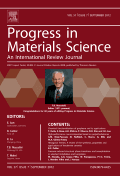
PROGRESS IN MATERIALS SCIENCE
Unveiling Breakthroughs in Material ResearchPROGRESS IN MATERIALS SCIENCE is an esteemed peer-reviewed journal published by Pergamon-Elsevier Science Ltd, focusing on pioneering advancements and comprehensive studies in the field of Materials Science. With an ISSN of 0079-6425 and an E-ISSN of 1873-2208, this journal boasts a prestigious status, ranking in the Q1 category for Materials Science (miscellaneous) and achieving a remarkable 99th percentile in Scopus rankings, positioned 4th out of 463 journals in General Materials Science. Published from the United Kingdom, PROGRESS IN MATERIALS SCIENCE provides critical insights into the latest discoveries, trends, and methodologies shaping the materials science landscape, making it an invaluable resource for researchers, professionals, and students alike. Readers can explore rich content on subjects ranging from nanomaterials to biomaterials and beyond, all designed to foster innovation and knowledge dissemination in the materials science community. Although it is not an open-access journal, it remains a pivotal platform for high-quality research and essential discourse in this dynamic field.
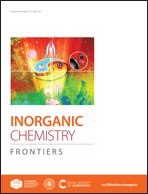
Inorganic Chemistry Frontiers
Leading the Charge in Inorganic Chemistry ResearchInorganic Chemistry Frontiers, published by the esteemed Royal Society of Chemistry, stands at the forefront of advancements in the field of inorganic chemistry, boasting a prestigious Q1 ranking in its category as of 2023 and an impressive Scopus Rank of #3 out of 79, placing it in the 96th percentile. Since its inception in 2014, this journal has provided a robust platform for high-quality research that spans the diverse and rapidly evolving areas of inorganic chemistry. As an open-access journal, it ensures that the findings presented are readily accessible to researchers, educators, and practitioners globally, fostering an inclusive environment for the dissemination of knowledge. With its rigorous peer-review process, Inorganic Chemistry Frontiers aims to facilitate interdisciplinary dialogue and innovation, making it an essential resource for anyone dedicated to exploring the myriad applications and theoretical advancements within inorganic chemistry.
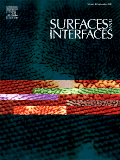
Surfaces and Interfaces
Connecting Disciplines through Surface InsightsSurfaces and Interfaces is a leading international journal published by Elsevier, dedicated to advancing the understanding of surface and interfacial phenomena across various disciplines, including chemistry, materials science, and physics. With an impressive impact factor placing it in the Q1 quartile for its categories as of 2023—spanning Chemistry, Condensed Matter Physics, and Surfaces, Coatings, and Films—this journal not only serves as a critical platform for innovative research but also reflects the dynamic nature of surface science in contemporary applications. The journal is indexed in Scopus, ranking 25th out of 132 in the Materials Science – Surfaces, Coatings and Films category, marking it in the top 19% of this prestigious field. Although it is not an open-access platform, the journal remains a vital source of curated academic material for researchers, professionals, and students seeking to deepen their knowledge and contribute to ongoing conversations in surface and interface science. Published from the heart of Europe in Amsterdam, Surfaces and Interfaces invites submissions that challenge conventional paradigms and explore the forefront of technology and materials.

Accounts of Materials Research
Elevating knowledge in the realm of materials chemistry.Accounts of Materials Research is a premier journal published by the American Chemical Society, focusing on the multidimensional field of materials science. With a robust impact factor and a commitment to open-access research, it serves as a vital platform for leading-edge discoveries from 2020 to 2024. The journal has rapidly ascended to the top quartile in multiple categories, including Chemical Engineering, Materials Chemistry, and Polymers and Plastics, demonstrating its significant influence within the academic community. Recognized by Scopus as a key resource—with remarkable rankings that place it in the 95th percentile of its field—Accounts of Materials Research is devoted to publishing high-quality, innovative research that addresses critical challenges in materials development and implementation. This journal is essential for researchers, professionals, and students seeking to stay informed about the latest advancements and collaborative opportunities within the interdisciplinary landscape of materials science.
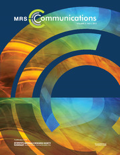
MRS Communications
Exploring the frontiers of materials through peer-reviewed excellence.MRS Communications is a prominent academic journal published by Springer Heidelberg, focusing on the multidisciplinary field of materials science. With ISSN 2159-6859 and E-ISSN 2159-6867, this journal has been a valuable platform for disseminating cutting-edge research since its inception in 2011. Operating from its esteemed headquarters in Heidelberg, Germany, it aims to foster collaboration and innovation among researchers and practitioners by publishing high-quality, peer-reviewed articles. Holding a Q3 ranking in the Materials Science (Miscellaneous) category, and currently positioned at the 37th percentile in the general materials science field, MRS Communications is dedicated to advancing the understanding of materials through interdisciplinary studies. The journal offers researchers an opportunity to share insights that bridge theoretical knowledge with practical applications, contributing significantly to the global materials science community. As an essential resource for researchers, professionals, and students alike, we invite you to explore the latest advancements and discussions in materials science through this influential publication.

Materials Futures
Catalyzing collaboration in cutting-edge materials research.Materials Futures, an esteemed journal published by IOP Publishing Ltd, stands out as a pivotal resource in the field of Materials Science, with a particular emphasis on Biomaterials. Launched in 2022 and operating under an Open Access model, the journal aims to foster accessibility and rapid dissemination of pioneering research, thus catering to the diverse needs of researchers, professionals, and students globally. With a commendable Scopus Rank of #46 out of 137 in its category, placing it in the 66th percentile, and recognized as a Q1 journal as of 2023, Materials Futures provides a vital platform for cutting-edge studies and innovations that address contemporary challenges in materials science. As the journal evolves through its convergence period from 2022 to 2024, it continues to attract high-quality submissions aimed at advancing knowledge and applications within the biomaterials sector, reflecting its commitment to contributing vital insights and fostering collaboration across disciplines. Explore Materials Futures for your research endeavors and join a community dedicated to shaping the future of materials.
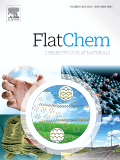
FlatChem
Fostering Global Collaboration in Materials InnovationFlatChem, an esteemed journal published by ELSEVIER, serves as a premier platform for disseminating high-quality research in the dynamic fields of ceramic and composite materials, electronic and optical materials, materials chemistry, and surfaces, coatings, and films. Since its inception in 2017, the journal has garnered a robust reputation, evidenced by its rank in the top quartile (Q1) across multiple categories, including a commendable rank of #25/127 in Ceramics and Composites and #49/284 in Electronic, Optical and Magnetic Materials. With a focus on pioneering advancements and innovative methodologies, FlatChem not only highlights cutting-edge research but also promotes collaboration and knowledge exchange within the scientific community. The journal’s impact is underscored by its impressive rankings in Scopus, marking it as a vital resource for researchers, professionals, and students aiming to stay at the forefront of materials science. As an open-access journal, it ensures that groundbreaking findings are readily accessible, fostering a broader understanding and application of materials innovation worldwide. The journal is based in the Netherlands, with its headquarters located at RADARWEG 29, 1043 NX AMSTERDAM, NETHERLANDS. Join the vibrant community contributing to FlatChem and engage with the forefront of material advancements.